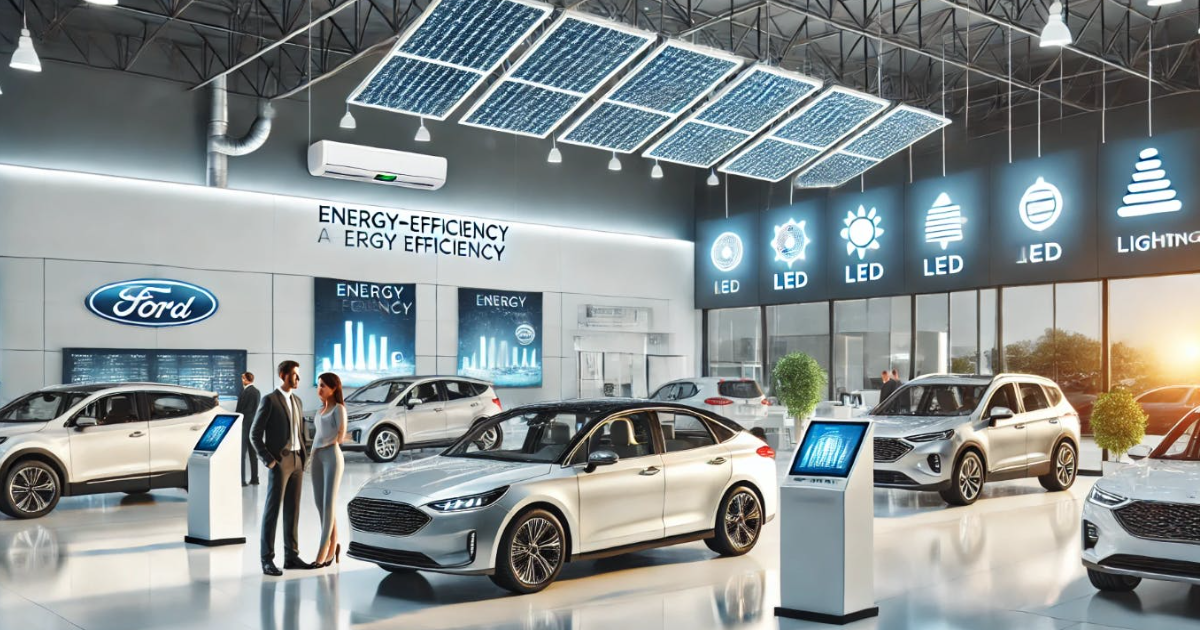
How to Invest in Energy-Efficient Lighting and Appliances for Your Dealership
In today's rapidly evolving business landscape, sustainability is no longer just an option—it's a necessity. Dealerships, with their significant energy consumption, have a unique opportunity to make impactful changes by investing in energy-efficient lighting and appliances. This not only helps in reducing operational costs but also enhances your dealership's green credentials, attracting environmentally conscious customers. In this blog, we'll explore how you can make these changes effectively.
Switching to Energy-Efficient Lighting
Benefits of LED Lighting
Switching to energy-efficient lighting, such as LED bulbs, can significantly reduce energy consumption and lower electricity bills. LEDs use up to 80% less energy than traditional incandescent bulbs and last up to 25 times longer, reducing replacement costs and maintenance efforts.
Steps to Implement LED Lighting
Audit Current Lighting: Conduct an audit of your current lighting setup to identify areas where LED lighting can be implemented.
Choose the Right LED Bulbs: Select LED bulbs that fit your dealership’s needs in terms of brightness, color temperature, and energy consumption.
Professional Installation: Hire a professional electrician to install the LED bulbs, ensuring optimal placement and functionality.
Smart Lighting Controls: Consider integrating smart lighting controls that allow you to adjust lighting levels based on occupancy and natural light availability.
Potential Savings
By switching to LED lighting, dealerships can save up to 30-40% on their lighting costs. Additionally, the long lifespan of LEDs means fewer replacements and lower maintenance costs over time.
Upgrading to Energy-Efficient HVAC Systems and Appliances
Importance of Efficient HVAC Systems
Heating, ventilation, and air conditioning (HVAC) systems are among the largest energy consumers in a dealership. Upgrading to energy-efficient HVAC systems can drastically reduce energy usage and improve indoor comfort.
Steps to Upgrade HVAC Systems
Energy Audit: Conduct an energy audit to assess the efficiency of your current HVAC system and identify areas for improvement.
Select Energy-Efficient Units: Choose HVAC systems with high SEER (Seasonal Energy Efficiency Ratio) ratings and ENERGY STAR certifications.
Regular Maintenance: Ensure regular maintenance of your HVAC systems to keep them running efficiently and extend their lifespan.
Programmable Thermostats: Install programmable thermostats to optimize heating and cooling schedules based on occupancy and business hours.
Benefits of Energy-Efficient Appliances
Upgrading to energy-efficient appliances, such as refrigerators, washers, and dryers, can further enhance your dealership’s energy profile. ENERGY STAR-rated appliances use significantly less energy than their non-certified counterparts, contributing to overall energy savings.
Harnessing Solar Power
Advantages of Solar Panels
Installing solar panels can offset a considerable portion of a dealership's energy needs. Many dealerships have large roof spaces that are perfect for solar arrays, providing clean, renewable energy and reducing reliance on fossil fuels.
Steps to Install Solar Panels
Evaluate Solar Potential: Assess the suitability of your dealership’s roof for solar panel installation, considering factors like orientation, shading, and available space.
Financial Analysis: Conduct a financial analysis to determine the initial investment, potential savings, and payback period for solar panel installation.
Select a Reputable Installer: Choose a reputable solar panel installation company with experience in commercial projects.
Installation and Monitoring: Install the solar panels and set up a monitoring system to track energy production and usage.
Incentives and Rebates
Explore available incentives and rebates for solar installations, such as federal tax credits, state incentives, and utility rebates. These can significantly reduce the upfront cost of solar panel installation and improve the return on investment.
Conclusion
Investing in energy-efficient lighting, HVAC systems, and appliances, along with harnessing solar power, can transform your dealership’s energy profile. Not only will these changes reduce operational costs, but they will also enhance your dealership's reputation as an environmentally responsible business. Start with an energy audit, plan your upgrades strategically, and take advantage of available incentives to make your dealership a model of sustainability. By embracing these energy-efficient solutions, you are not only contributing to a greener planet but also setting a positive example for the automotive industry.
